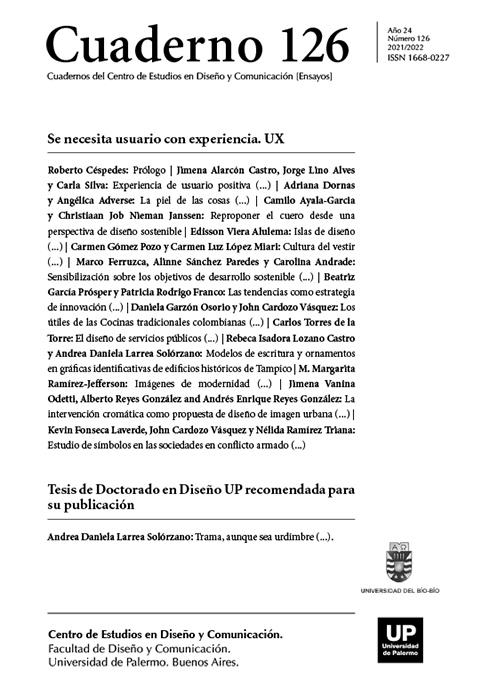Islas de diseño: 3Re, una versión de sostenibilidad aplicada a pequeñas y medianas empresas fabricantes de calzado en la provincia de Tungurahua
Abstract
In this age of crisis and uncertainty, the design has to propose, in present and future, a reflection thinking in the perspectives of science, technology, economy, production, and ecology. The new scenarios of global growth pose a cultural structure from the project to the real world by associating object-user-nature. This plans society wellness under the statement of Brundtland Commission (1987).
The satisfaction of necessities is argued in the economic speeches from two approaches: development and sustainability. The argumentation of the last has two reasonable doubts: an antieconomic growth due to an infinite growth in a finite system, and on the other hand the social inequality in wealth distribution. This proposal of Design Islands breaks routines towards more collective ways, from social innovation syncing individual, social, and environmental interests in 3Re: Re-discover, Re-organize, and Re-engineer. The Design Islands establish certainty via a sustainable design model to improve the quality of life from managing social innovation in production systems, solving problems and creating meaning towards an ecology of relationships between people and their environment.
From this context, we propose the 3Re as an approach for small and medium footwear manufacture companies in Tungurahua province in which 70% of Ecuadorian footwear is manufactured, with a production of around 19 million of pairs of shoes in 2016.
References
Bonsiepe, G. (1999). Del Objeto a la interfase (Ediciones).
Brundtland, G. H. (1987). Informe de la Comisión Mundial sobre Medio Ambiente y el Desarrollo: Nuestro futuro común. Documentos de Las Naciones, Recolección de Un …, 416. http://scholar.google.com/scholar?l=en&btnG=Search&q=intitle:Informe+de+la+comision+mundial+sobre+el+medio+ambiente+y+el+desarrollo.+nuestro+futuro+comun#5
Canale, G. (2009). Económica Social Ambiental. 1-21.
Cebrián, F. (1993). Anotaciones a La Estructura Espacial De La Industria En Ecuador. Papeles de Geografia, 19, 103-114.
Devalle, V. (2009). La Travesía de la Forma: emergencia y consolidación del Diseño Gráfico (1a ed.). Paidos.
Daly, H. E. (2008). Aportes. Fonseca Reis, A. C. (2018). Economía creativa. In Itaú Cultural.
Manzini, E. (2015). Cuando todos diseñan: Una introducción al diseño para la innovación social (1a ed.).
Manzzini, E. (2016). Design Culture and Dialogic Design. Design Issues, 32, 52-59. https:// doi.org/10.1162/DESI/_a_00364
Papanek, V. (2014). Diseñar para el mundo real (segunda). El Tinter.
Ramrattan, L.; Szenberg, M.; Ramrattan, L. & Szenberg, M. (2018). The Footwear Industry. Distressed Us Industries in the Era of Globalization, 37-52. https://doi.org/10.4324/9781351159807-3
SENPLADES. (2009). Plan Nacional para el Buen Vivir 2009-2013: Construyendo un Estado Plurinacional e Intercultural.
Los autores/as que publiquen en esta revista ceden los derechos de autor y de publicación a "Cuadernos del Centro de Estudios de Diseño y Comunicación", Aceptando el registro de su trabajo bajo una licencia de atribución de Creative Commons, que permite a terceros utilizar lo publicado siempre que de el crédito pertinente a los autores y a esta revista.


